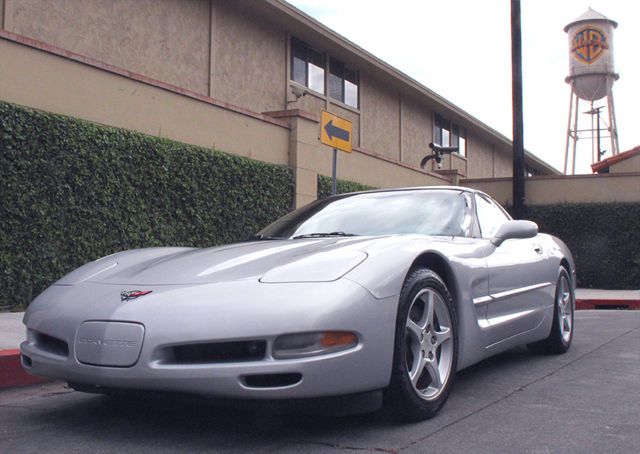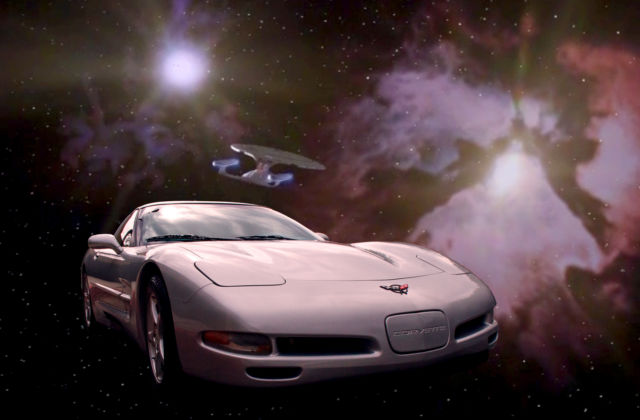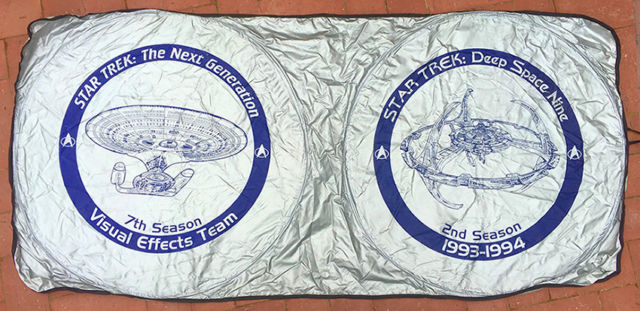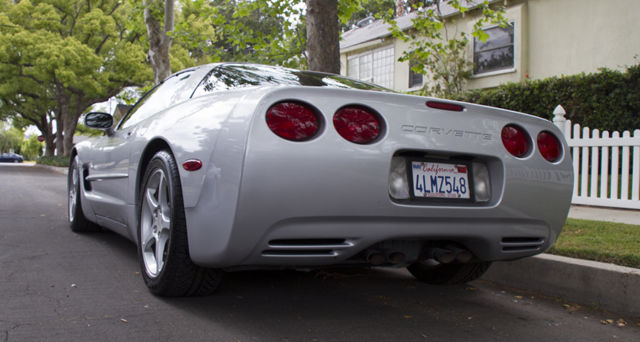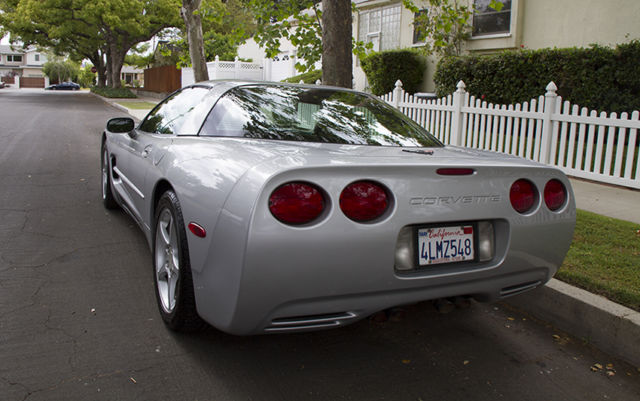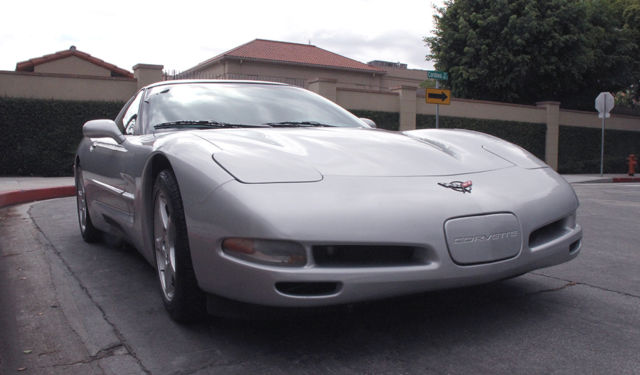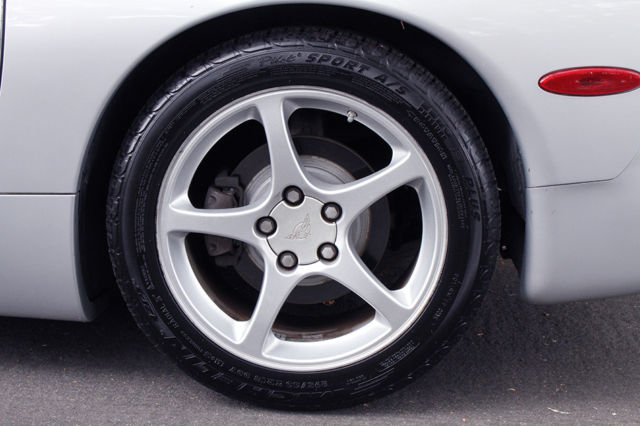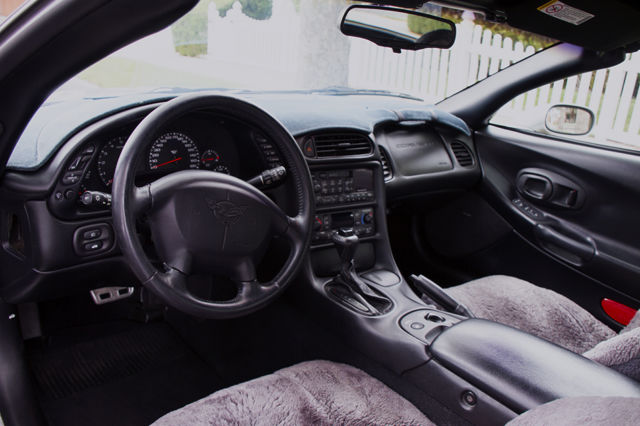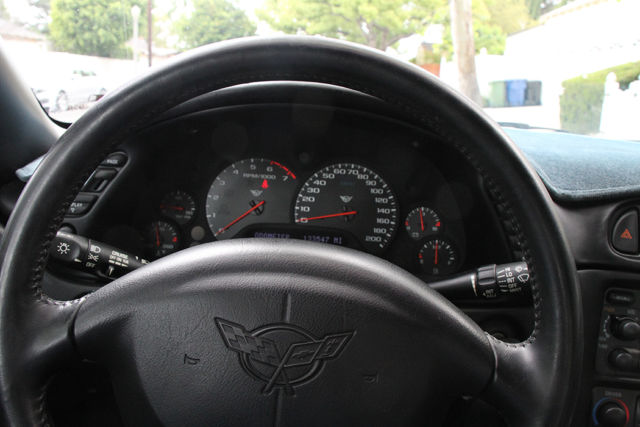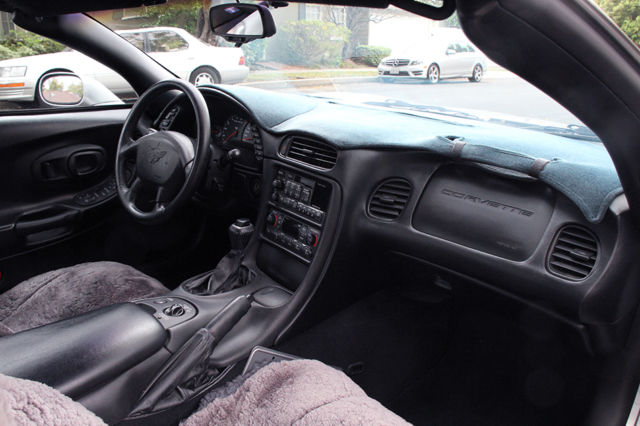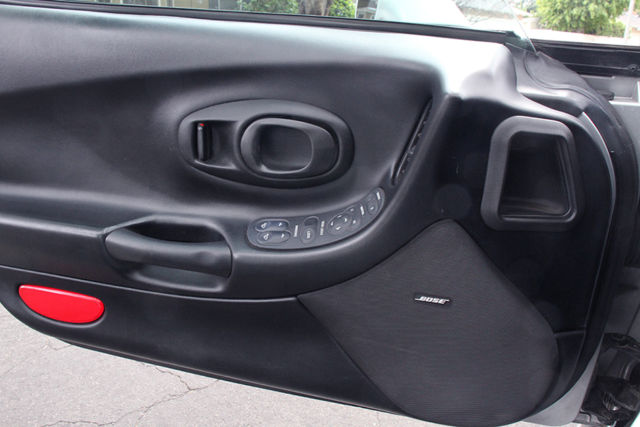2000 Chevrolet Corvette Base Coupe 2-Door 5.7L
- Condition: Used
- Make: Chevrolet
- Model: Corvette
- Type: Coupe
- Trim: Base Coupe 2-Door
- Year: 2000
- Mileage: 133,566
- VIN: 1G1YY22G8Y5127572
- Color: Silver
- Engine size: 5.7L 350Cu. In. V8 GAS OHV Naturally Aspirated
- Number of cylinders: 8
- Power options: Air Conditioning, Cruise Control, Power Locks, Power Windows, Power Seats
- Fuel: Gasoline
- Transmission: Automatic
- Drive type: RWD
- Interior color: Black
- Safety options: Anti-Lock Brakes, Driver Airbag
- Options: Leather Seats
- Vehicle Title: Clear
- Interested?
2000 Chevrolet Corvette Description
THIS WONDERFUL CELEBRITY OWNED C5 CORVETTE ALSO COMES WITH LIMITED EDITION ART WORKAUTOGRAPHED STAR TREK MEMORABILIA INCLUDES SUNSHADE,CAR IN SPACE POSTER AND KLINGON POSTER
AUTOGRAPHED KLINGON POSTER SIGNED BY DAN CURRY HIMSELF IT ALSO WILL HAVE A NOTARIZED CERTIFICATE OF AUTHENTICITY
THIS IS A NO RESERVE AUCTION IT WILL SELL TO THE TOP BIDDER YOU CAN PERSONALLY TAKE DELIVERY HERE IS LOS ANGELES CALIFORNIA AND MEET THE LEGENDARY DAN CURRY IN PERSON
Dan Curry’s 2000 Corvette C5 Ordered from the factory in 2000 with every option available: heads up display, premium Bose sound system, removable solid and glass roofs, adjustable suspension, etc., silver with black interior.
One owner: STAR TREK’s Dan Curry - 7-time Emmy winner served as Sr. Visual Effects Supervisor/Producer, Director, Conceptual Designer, inventor of the Klingon Bat’Leth, Mek’Leth and martial arts style for The Next Generation; Deep Space Nine; and Enterprise. A veteran of over 100 feature films and television productions Dan’s work in Visual Effects and Title Design appears in such landmark films as Raiders of the Lost Ark; Indiana Jones and the Temple of Doom; Top Gun; Dead Men Don’t Wear Plaid; Coming to America; Staying Alive, and NBC’s hit spy comedy series, CHUCK .
There is a lot of Hollywood history in this car. Dan drove it to the sound stages at Paramount Pictures, motion control stages, and to locations for STAR TREK: Voyager and Enterprise, as well as Chuck, Moonlight, and Witches of East End, frequently accompanied by members of the cast and crew. This car’s large trunk space allowed for transporting screen-used models, matte paintings, conceptual art, and props. The Corvette also appeared as a background vehicle in a commercial.
Dan Curry - Directors Guild of America, American Society of Cinematographers, Visual Effects Society, Producers Guild of America, Art Directors Guild of America
Dan has lectured on film all over the US, Canada, Thailand, Malaysia, New Zealand and Europe.
A major change from its predecessor the C4, the C5 featured a hydroformed box frame, a design that offered an improved structural platform, especially for a convertible body style. The transmission was relocated to the rear of the car to form an integrated, rear-mounted transaxle assembly, connected to the all-new LS1 engine via a torque tube — an engine/transmission arrangement enabling a 50-50 (percentage, front-rear) weight distribution for improved handling. The LS1 engine initially produced 345hp (257kW), subsequently increased in 2001 to 350hp (261kW). The 4L60-E automatic transmission carried over from previous models, but the manual was replaced by a Borg-Warner T-56 6-speed capable of a 175mph (282km/h) top speed. Relative to the C4, the new platform and structural design substantially reduced squeaks and rattles.[1]
Chevrolet Corvette C5 coupe
In the inaugural model year (1997), only the fastback coupé was offered, with the convertible – the first to offer a trunk since 1962 – following in 1998. 1998 also saw the C5 convertible pacing the Indianapolis 500, and a replica pace car edition was sold and the 1998 Corvette was named "Motor Trend Car of The Year"; C5 Corvettes subsequently paced the 2002 and 2004 Indianapolis 500 races, but no replica pace car versions were offered during those model years. In 1999, a third body style, the hardtop (also referred to as the "fixed-roof coupé" or "FRC"), was added to the lineup. This body style, as its name suggests, featured a fixed top (no removable targa top panel as with the fastback coupé) with a roofline shape and trunk space similar to that of the convertible. as well as a distinct notchback-style rear window.
Aside from cosmetic differences (new wheel styles, paint colors, pace car/commemorative editions in 1998, 2003, and 2004, etc.), horsepower boosts, and new offerings for optional equipment, there were few fundamental changes from one model year to the next within the production run of the C5. One of the more popular "high-tech" options introduced to the Corvette line was a head-up display or HUD, while another innovation was the Active Handling System (first available as an option in 1998, then standard on all models in 2001). The C5 was also the first Corvette to incorporate a drive-by-wire throttle; and variable-effort steering, whereby the assist level of the power steering is varied according to vehicle speed (more at lower speeds, less at higher speeds). Also notable, though rarely discussed, the C5 generation was the first model to adopt the parallel or 'tandem' windshield wiper configuration, abandoning the opposed configuration that was used on every previous Corvette model since the first in 1953.
In contrast to the reputation of high-performance vehicles for poor fuel economy, the C5 achieves comparatively high EPA ratings of 18/25 mpg (city/highway) with the automatic transmission[2] and 19/28 with the manual transmission,[3][4] allowing it to avoid the "gas guzzler" tax that is levied against most other vehicles in the Corvette's class. A number of factors are responsible for this: the relatively light weight of the C5 (a curb weight under 3,300lb (1,500kg); Chevrolet went so far as to omit the spare tire as a weight-saving measure, relying upon run-flat tires instead); the C5's low drag coefficient; and the vehicle's tendency to upshift into the higher gears as soon as possible. The manual transmission's Computer-Aided Gear Shifting results in an obligatory shift from 1st gear directly into 4th gear under certain driving conditions; the system can be deactivated through the use of an aftermarket device.
Suspension choices for the base model C5 were limited to the standard suspension (RPO FE1), with options for either the autocross-inspired FE3 Sport Suspension (included with the Z51 Performance & Handling Package and standard on the 1999–2000 FRC); or the F45 Selective Ride Control Suspension, which permitted "on-the-fly" driver selection of different ride characteristics (sport or touring). Late in the production run (starting with the 2003 model year), the F55 Magnetic Selective Ride Control Suspension replaced the F45 as the third suspension choice. The racing-inspired FE4 suspension used for the Z06 is stiffer again than any offered on the base model C5, and is unique to that model with no optional suspensions offered. The C5's suspension consisted of independent unequal-length double wishbones with transverse fiberglass mono-leaf springs and optional magnetorheological dampers.
The C5 is capable of matching or besting the 0–60mph acceleration times of some of the world's premier sports cars, including the Aston Martin DB7 Vantage, and the Ferrari 355. A composite of published performance numbers for the base-model coupé and convertible gives a 0–60mph time of around 4.5seconds, and a standing quarter-mile time of around 13.3seconds at 108mph (both times for a vehicle equipped with the 6-speed manual transmission).[5]
While the C5 may have been initially criticized for using inexpensive materials and older technology (e.g., composites in body panels and floor boards; an OHV engine; and leaf springs), ostensibly as cost-cutting measures, these components are actually very strong for their relatively light weight (low mass), or have proven reliability. The C5's modular body panels make excellent use of a lightweight composite material known in the automotive industry as SMC or sheet molded composite, a type of fiberglass that is blended and bonded with plastics. SMC provides better protection against direct blows because it is very stiff and will not dent. The floor boards on the C5 are a composite sandwich of SMC with balsa wood in the middle. Balsa wood was chosen for its extreme stiffness, light weight and excellent sound deadening qualities. The all aluminum LS1 overhead valve engine is much lighter than its cast iron predecessor, the LT1 and provides for a much lower hoodline when compared to an overhead cam design of relative displacement. The composite leaf springs are much lighter and sit much lower than typical coil springs and help provide the C5 with its excellent ride characteristics and distinctive ride height.
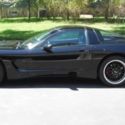 2000 Chevrolet Corvette Base coupe 2 door
2000 Chevrolet Corvette Base coupe 2 door
Mileage: 163,738
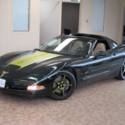 2000 Chevrolet Corvette Base 2dr Coupe 111503 Miles Green Coupe 5.7L V8 Manual 6
2000 Chevrolet Corvette Base 2dr Coupe 111503 Miles Green Coupe 5.7L V8 Manual 6
Mileage: 111,503
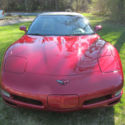 2000 Chevrolet Corvette Base Convertible 2-Door 5.7L
2000 Chevrolet Corvette Base Convertible 2-Door 5.7L
Mileage: 46,969
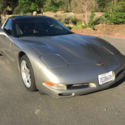 2000 Chevrolet Corvette Base Hatchback 2-Door 5.7L
2000 Chevrolet Corvette Base Hatchback 2-Door 5.7L
Mileage: 151,151
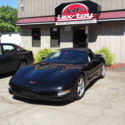 2000 Chevrolet Corvette Base Convertible 2-Door 5.7L 6 spd manual-NO RESERVE!!!!
2000 Chevrolet Corvette Base Convertible 2-Door 5.7L 6 spd manual-NO RESERVE!!!!
Mileage: 80,825
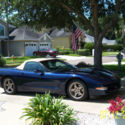 2000 Chevrolet Corvette Base Convertible, Fully Loaded, 2-Door 5.7L
2000 Chevrolet Corvette Base Convertible, Fully Loaded, 2-Door 5.7L
Mileage: 39,700
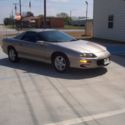 2000 Chevrolet Camaro Base Coupe 2-Door 3.8L
2000 Chevrolet Camaro Base Coupe 2-Door 3.8L
Mileage: 162,747
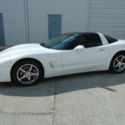 2000 Chevrolet Corvette Coupe 2-Door 5.7L
2000 Chevrolet Corvette Coupe 2-Door 5.7L
Mileage: 89,391
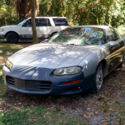 2000 Chevrolet Camaro Base Coupe 2-Door 3.8L manual transmission project rat rod
2000 Chevrolet Camaro Base Coupe 2-Door 3.8L manual transmission project rat rod
Mileage: 170,000
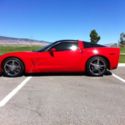 2005 Chevrolet Corvette Base Coupe 2-Door 6.0L 54,500 mi.
2005 Chevrolet Corvette Base Coupe 2-Door 6.0L 54,500 mi.
Mileage: 54,200
